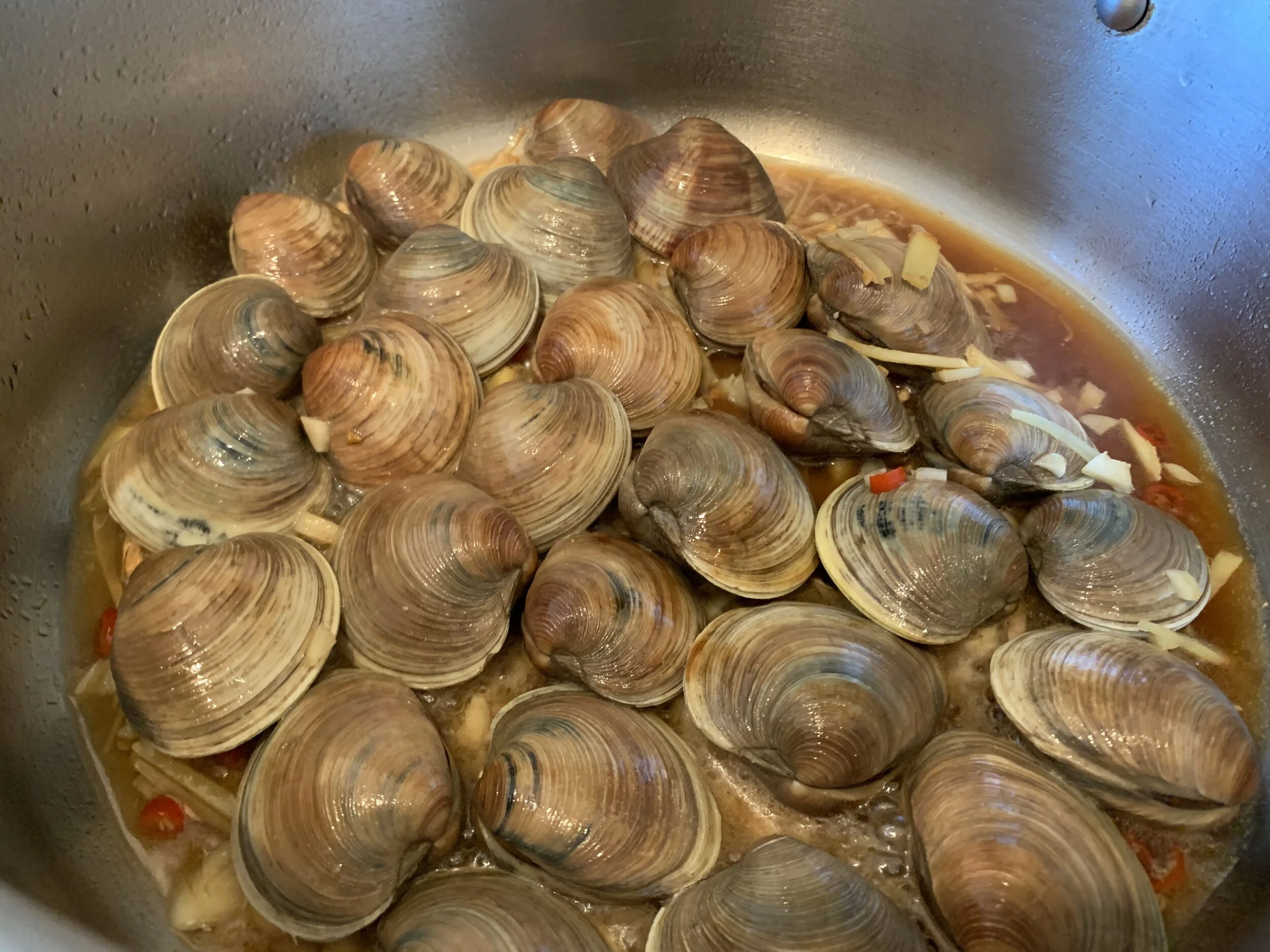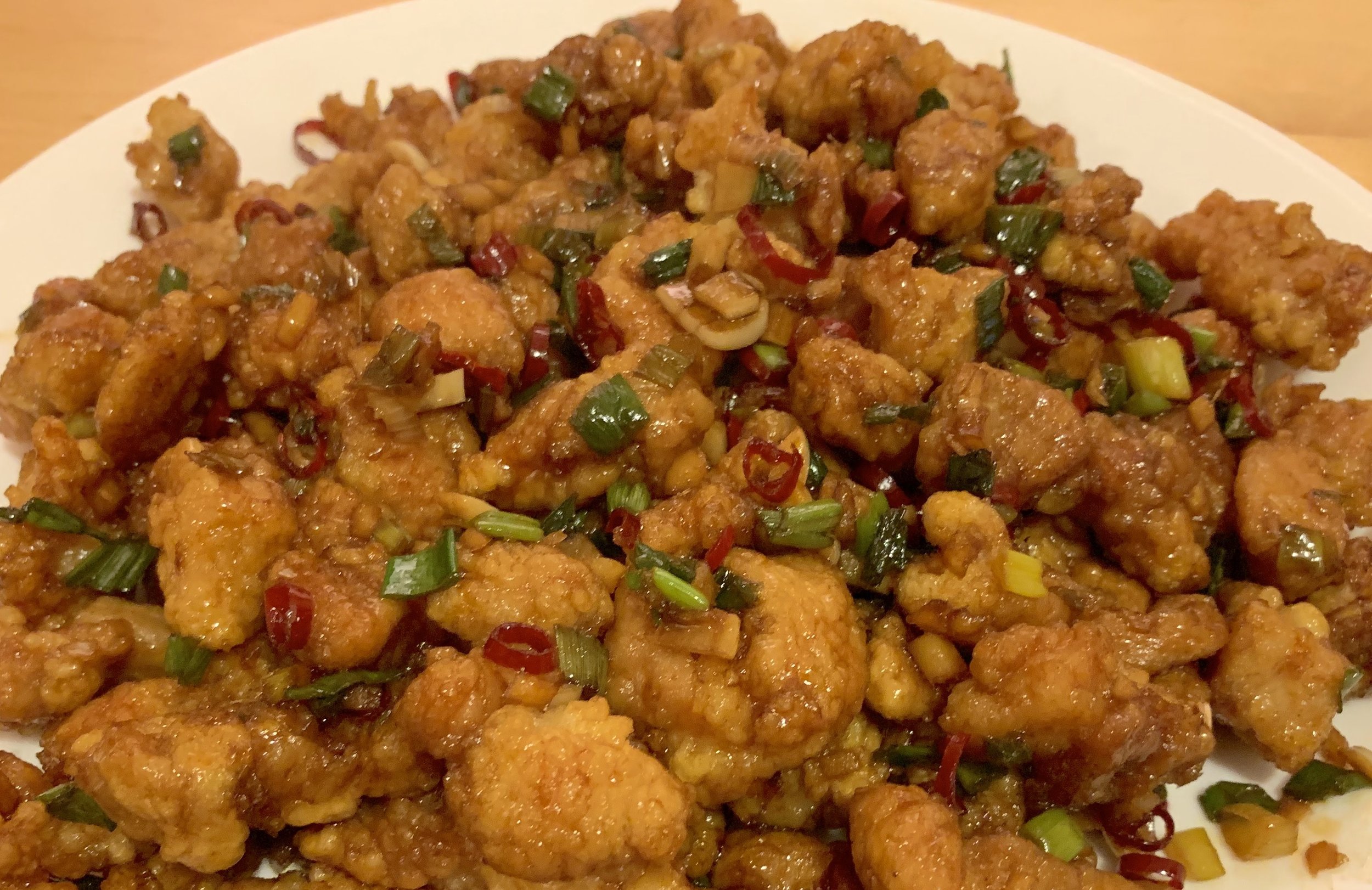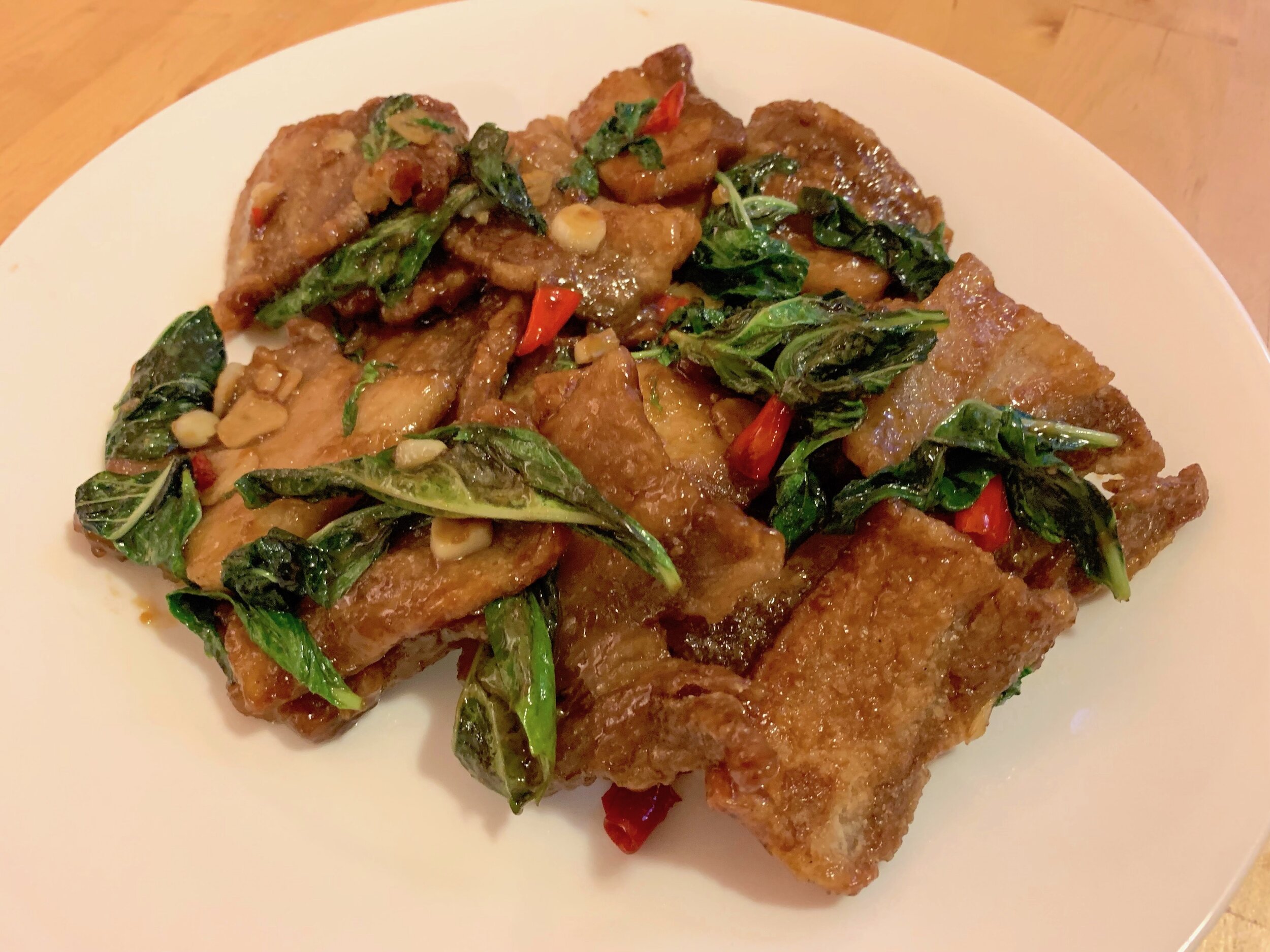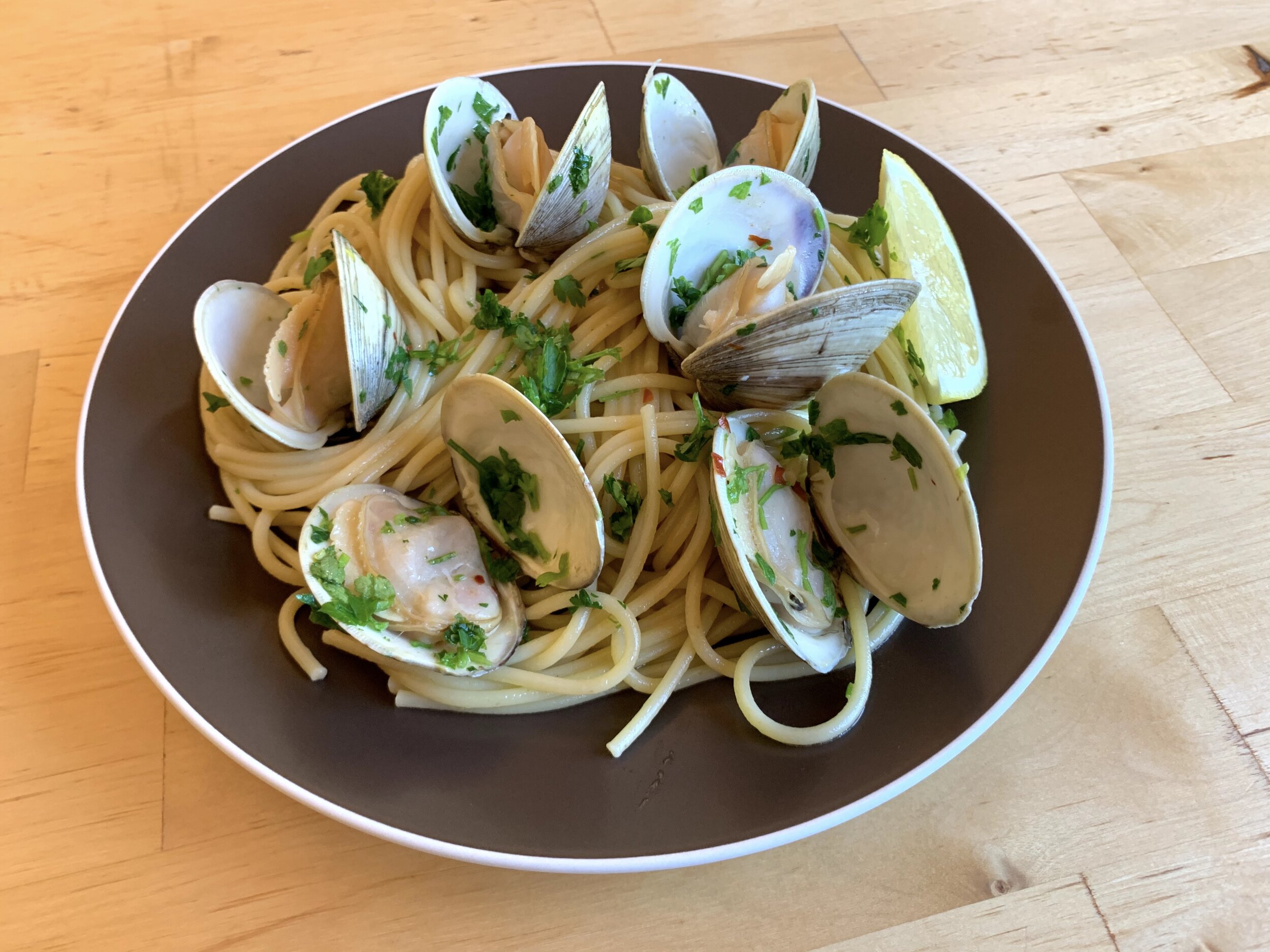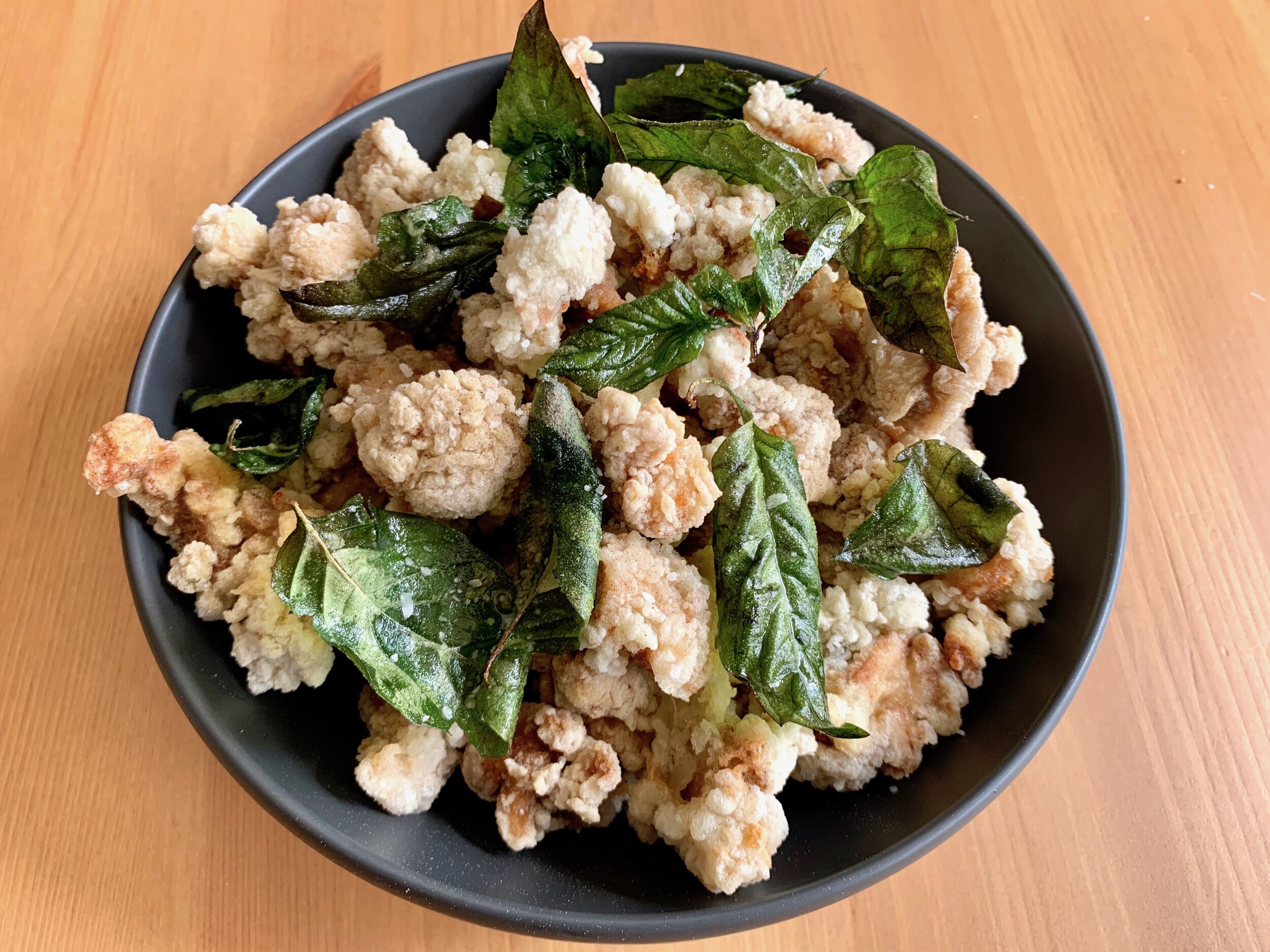Taiwanese-Style Clams
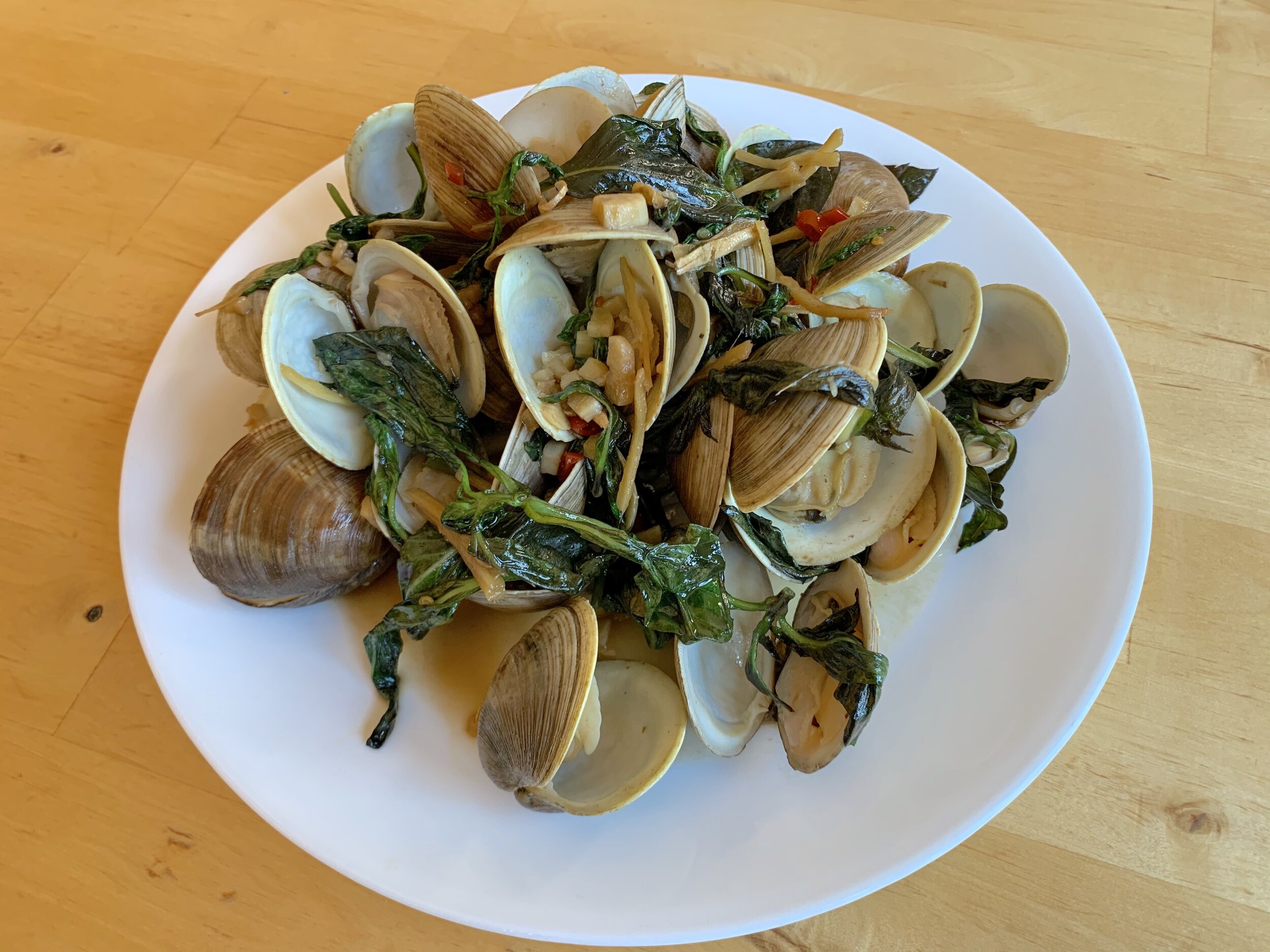
台式炒蛤蜊 (Tai Shi Chao Ge Li)
Taiwanese street vendors often serve 小炒, a “small stir-fry” consisting of fresh ingredients cooked quickly and simply to order. Taiwan is an island with ready access to fresh seafood, and one of the most popular 小炒 features clams cooked in a punchy, aromatic sauce, tossed with spicy chilies and fragrant basil.
Ingredients
2 lb manila or littleneck clams, cleaned
1 inch ginger, julienned
5 cloves garlic, minced
2 bird’s eye chilies, chopped
½ cup rice wine
1 tsp soy sauce
1 tsp oyster sauce
1 tsp sugar
1 tsp sesame oil
1 cup Thai basil
Vegetable oil
In Taiwan, this dish is made with manila clams, [1] but any species of clam will work in this dish, so use whatever is available fresh in your region. Look for small clams, which are more tender than their larger brethren. Before we discuss cooking, a quick word on storing and cleaning clams. Like most bivalves, clams need to be kept alive before cooking—dead clams will go bad quickly. Because of this, it is best to cook clams the day they come home from the store. If that isn’t possible, you can hold clams for up to 2 days in the refrigerator by keeping them in an open container covered with a damp paper towel. The container must be open to prevent the clams from suffocating, and the damp paper towel will prevent them from drying out.
At most grocery stores, clams sold loose in the case are already cleaned. However, clams still in the bag likely have not been. Clams live in the sand of the seabed, and feed by filtering microorganisms out of the seawater. Because of this, sand and other debris often sticks to the outside of the shell. Additionally, the clam will ingest some sand as it feeds, resulting in grit inside the clam. No one likes getting sand in their food, so if your clams have not yet been cleaned, you will have to do it at home. The first step to cleaning a clam is purging the guts of grit. The ideal way to do this is to place the clams in a bucket of cold, clean seawater for a few hours, and let them expel the grit on their own. Clams kept in seawater can stay submerged for up to a day. However, as most people do not have access to seawater, you must do your best to replicate seawater at home. We can do this by mixing cold water with sea salt, at a ratio of 1 tablespoon salt to 2 cups water. Place the clams in this solution for 1-2 hours to let them expel the grit. Do not use fresh water, which will kill the clams. The clams are unlikely to survive for too long in the salt water, so do not keep them submerged for longer than 2 hours.
As you remove clams from the solution, scrub the shells with a clean and sturdy brush to rid the shells of any sand or mud. While you scrub, look out for any open clams. Clams which are alive and healthy should be tightly shut. If a clam is open, give it a strong tap on the shell. If the clam doesn’t immediately close, it’s probably dead. Throw it out.
With the clams ready, we can move on to the other ingredients. This recipe moves quickly, so we want to perform all of our mise en place before introducing anything to the heat. Mince the garlic, chop the chilies, and julienne the ginger. Wash the Thai basil and pull off the leaves, discarding the woody stems. We should also prepare the sauce in which we will cook the clams. Mix ½ cup rice wine with 1 tsp soy sauce, 1 tsp oyster sauce, and 1 tsp sugar, and set the sauce mixture aside.
The clams will cook mostly by steaming, so we want to use a pot with a tight-fitting lid for this dish. Heat about 1 teaspoon vegetable oil in the pot over high heat, and add the minced garlic, julienned ginger, and chopped chilies to the pot. Fry for about 30 seconds, stirring occasionally, until the aromatics become fragrant.
Add the clams to the pot, pour over the sauce mixture, and immediately clamp on the lid—the wine should almost immediately start to produce steam. The clams should cook in 3-5 minutes, depending on their size. Shake the pot occasionally to toss the clams without opening the lid.
There is nothing worse than an overcooked, rubbery clam. Because clams are so lean, even an additional minute under heat will cause the clam to become tough. No matter how close in size your batch of clams are, there will always be some variation, with the smallest clams likely to be done first. Therefore, to avoid overdone clams, we have to pull each individual clam out of the pot as soon as its done cooking, rather than wait for the entire batch to be done. Fortunately for us, clams have a built-in doneness indicator—when a clam is cooked, it opens! [2] Have a large bowl standing by to hold the cooked clams, and once the clams have been in the pot for 3 minutes, start checking. Open the lid, quickly remove any open clams to the bowl, and then close the lid again. Repeat this process every 30 seconds, removing the clams as they finish cooking, until all the clams are cooked.
When all the clams are done, return them all to the pot, together with any juices that have collected at the bottom of the bowl. Throw in the Thai basil leaves, and toss the basil and the clams in the sauce for just one minute, or until the basil wilts. Kill the heat, pour over the sesame oil, and toss the clams one more time. Serve immediately, with some rice to mop up the sauce!
Substitutions
If you don’t have rice wine, you can substitute it with a dry white wine. Scallions can be used in addition to or in lieu of Thai basil, which will give the dish a milder flavor. If two chilies is too spicy for you, you can use just one, or remove the seeds, or omit the chilies altogether.
If you don’t have fresh clams available, you can use frozen clams. If you are doing so, treat the dish as a stir-fry.
[1] Manila clams (Ruditapes philippinarum), also known as Japanese littlenecks or Japanese cockles, are a saltwater clam native to the Indian and Pacific Oceans.
[2] Why do clams open when cooked? When a clam is alive, it opens and closes its shell often—to feed, to dig, to defend itself against predators, or to prevent drying out if exposed to air. As muscles are only capable of contracting, a clam can use a muscle (the abductor muscle) to close its shell, but cannot use one to open its shell. Instead, evolution has crafted bivalve shells to have an elastic hinge ligament which “spring-loads” the shell. A clamshell will open on its own, unless a muscle is contracted to pull it shut. When a clam is cooked, the proteins of the abductor muscle denature, causing the muscle to release its grip. The shell then opens on its own due to the elastic hinge.
Recipe
Prep Time: 10 min Cook Time: 8 min Total Time: 18 min
Difficulty: 3/5
Heat Sources: 1 burner
Equipment: pot
Servings: 4
Ingredients
2 lb manila or littleneck clams, cleaned
1 inch ginger, julienned
5 cloves garlic, minced
2 bird’s eye chilies, chopped
½ cup rice wine
1 tsp soy sauce
1 tsp oyster sauce
1 tsp sugar
1 tsp sesame oil
1 cup Thai basil
Vegetable oil
Instructions
1. Mince the garlic, chop the chilies, and julienne the ginger. Wash the Thai basil and tear off the leaves. Set the leaves aside, and discard the woody stems.
2. Mix together the rice wine, soy sauce, oyster sauce, and sugar to make the sauce.
3. Heat 1 tsp vegetable oil in a pot over high heat, and add the garlic, ginger, and chilies to the pot. Stir-fry for 30 seconds, until the aromatics are fragrant.
4. Add the clams to the pot, and pour over the wine mixture. Immediately clamp on the lid and steam for 3-5 minutes, shaking the pot occasionally to toss the clams.
5. As soon as a clam opens in the pot, it is cooked. Each clam will cook in a slightly different time, and keeping a clam on the heat after it has opened will result in that clam becoming overcooked and rubbery. From 3 minutes onwards, check the pot every 30 seconds for open clams, and remove the cooked clams to a large bowl. Continue cooking, removing the clams as they finish cooking, until all the clams are cooked.
6. Add the cooked clams back to the pot, together with the Thai basil leaves. Toss for 1 minute, until the basil just wilts. Turn off the heat, and pour over the sesame oil. Toss the clams in the sauce, and serve immediately.






